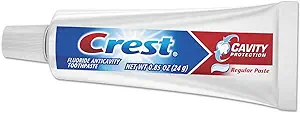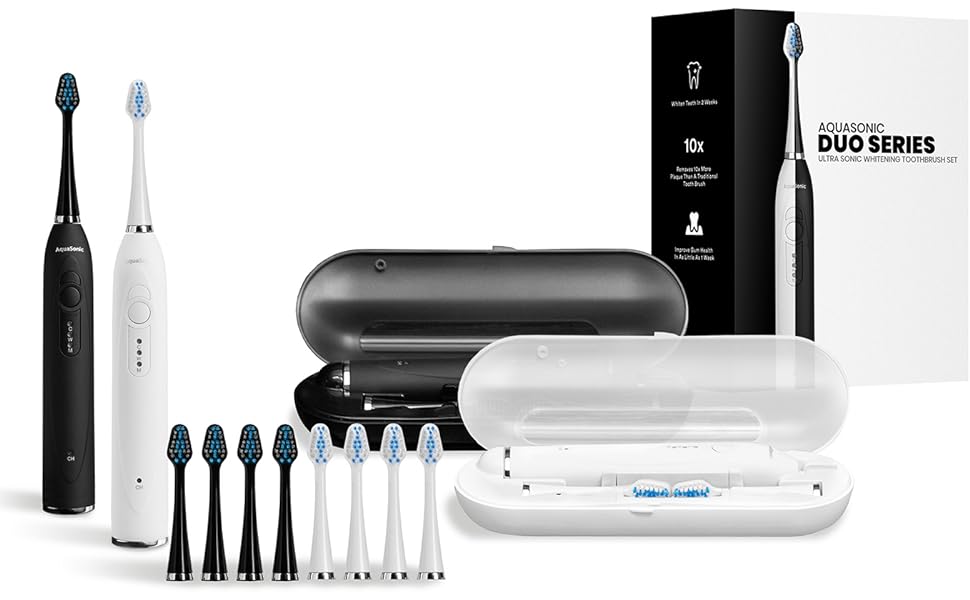Introduction
In addition to its primary function of cleaning teeth, toothpaste has evolved over time to offer a wide range of benefits. Many brands now include ingredients that address specific oral health concerns, such as sensitive teeth, gum disease, or enamel strengthening.

Fluoride is a common ingredient found in most toothpaste formulations. It plays a crucial role in preventing tooth decay by remineralizing weakened enamel and making teeth more resistant to acid attacks from bacteria. This mineral has been instrumental in reducing the prevalence of cavities worldwide.
This product also contains mild abrasives like calcium carbonate or hydrated silica. These gentle particles help remove surface stains caused by food, beverages, and tobacco, restoring the natural whiteness of teeth.
However, it’s important to note that excessive use of abrasive tooth products or aggressive brushing can lead to enamel erosion over time.Antibacterial agents like triclosan or essential oils such as eucalyptol and thymol are often included in toothpaste formulas.
History of Toothpaste
The earliest known use of toothpaste dates back to Ancient Egypt. The Egyptians used a mixture of salt, vinegar, and herbs to clean their teeth. The Greeks and Romans also used This product, and their recipes were more similar to modern toothpastes.
Toothpaste became more popular in the 18th century with the development of the toothbrush. The first commercial toothpaste was introduced in the 1850s, and it was made with soap and chalk.
It continued to evolve over the years, and new ingredients were added to improve its effectiveness.Today, there are many different types of toothpaste available, each with its own unique ingredients and benefits. Some common ingredients inthe product include fluoride, abrasives, humectants, and flavorings.
Ingredients of Toothpaste
Active ingredients in This product are the key components that directly contribute to its primary purpose of maintaining oral hygiene. Abrasives, for example, play a crucial role in removing plaque and stains from teeth surfaces. These substances, often in the form of calcium carbonate or hydrated silica, help to physically scrub away debris and surface stains, leaving teeth cleaner and brighter.
Humectants are another important active ingredient found in toothpaste. These substances, such as glycerin or sorbitol, help to retain moisture within the product formulation. This not only gives it its smooth texture but also prevents it from drying out over time. Humectants ensure that the toothpaste remains effective and easy to use throughout its shelf life.
Flavorings are also considered active ingredients in This product. While they may seem more like a sensory enhancement rather than a functional component, flavorings serve an important purpose. By providing a pleasant taste experience, they encourage regular brushing habits and make the overall oral care routine more enjoyable.
Types of Toothpaste
There are many different types of toothpaste available, each with its own unique formulation:
Anti-plaque toothpaste:
Using anti-plaque toothpaste as part of your daily oral hygiene routine is crucial for maintaining good dental health. Plaque is constantly forming on our teeth, especially after consuming sugary or starchy foods. If left untreated, plaque can harden into tartar, which is much more difficult to remove and can lead to gum disease.
The active ingredients in anti-plaque toothpaste work in various ways to combat plaque buildup. One common ingredient is fluoride, which not only strengthens tooth enamel but also helps prevent the growth of bacteria that contribute to plaque formation. Fluoride also aids in remineralizing teeth, reversing early signs of tooth decay.
Another key component found in anti-plaque toothpaste is an abrasive agent such as silica or calcium carbonate. These substances gently scrub away the sticky film of plaque from the tooth surface, preventing it from adhering and accumulating over time. Additionally, some anti-plaque toothpastes contain enzymes like papain or bromelain that break down the proteins present in teeth.
Anti-gingivitis toothpaste:
By using anti-gingivitis toothpaste, individuals can take proactive steps to maintain their oral health and prevent the progression of gum diseases. The primary cause of gingivitis is the buildup of plaque, a sticky film containing bacteria that forms on teeth and gums. If left untreated, this plaque can irritate the gums, causing inflammation and leading to gingivitis.
The ingredients in anti-gingivitis toothpaste work in several ways to combat this issue. Firstly, they often include antibacterial agents that help kill the bacteria responsible for plaque formation. By reducing the number of harmful bacteria in the mouth, These products can help prevent the initial stages of gum disease.
Additionally, anti-gingivitis toothpaste may contain anti-inflammatory agents such as aloe vera or chamomile extract. These ingredients help soothe and calm inflamed gums, reducing redness and swelling associated with gingivitis. By addressing inflammation promptly, individuals can prevent further damage to their gums and potentially avoid more cavities.
Whitening toothpaste:
In addition to removing stains, whitening toothpaste often contains mild abrasives that help to polish the teeth’s surface. These abrasives work by gently scrubbing away surface stains and plaque buildup, resulting in a cleaner and brighter smile.
Moreover, many whitening toothpaste brands incorporate hydrogen peroxide or carbamide peroxide as active ingredients. These compounds are known for their bleaching properties and can penetrate the enamel to break down deeper stains. As a result, over time, regular use of whitening toothpaste can gradually lighten the color of teeth and enhance their overall appearance.
It is important to note that while whitening toothpaste can provide noticeable improvements in tooth color, they may not be as effective as professional dental treatments. Professional teeth whitening procedures conducted by dentists often involve stronger bleaching agents or laser treatments that yield more dramatic results.
Furthermore, it is crucial to use This product correctly and follow the instructions provided. Overuse or misuse of these products can lead to tooth sensitivity.
Sensitive teeth toothpaste:
Sensitive teeth toothpaste is specifically formulated to provide relief from the discomfort caused by tooth sensitivity. It works by creating a protective layer over the exposed dentin, which is the sensitive part of the tooth. This layer helps to block the sensation of pain and discomfort when consuming hot or cold foods and beverages.
The ingredients in sensitive teeth toothpaste play a crucial role in its effectiveness. One common ingredient found in these products is potassium nitrate. This compound helps to desensitize the nerve endings in the teeth, reducing their sensitivity to external stimuli. By using this type of This product regularly, individuals can gradually experience a decrease in tooth sensitivity over time.
Another key ingredient often found in sensitive teeth toothpaste is fluoride. Fluoride strengthens the enamel, which is the protective outer layer of the teeth. By strengthening the enamel, fluoride helps to reduce sensitivity by preventing further erosion or damage to the teeth.This product may also contain desensitizing agents such as strontium chloride.
Fluoride toothpaste:
Fluoride toothpaste has become a staple in oral hygiene routines worldwide, and for good reason. The inclusion of fluoride in This product has revolutionized dental care by providing numerous benefits to our teeth and overall oral health.
One of the primary advantages of fluoride toothpaste is its ability to strengthen teeth. When we consume sugary or acidic foods and drinks, the enamel on our teeth can weaken due to the acid produced by bacteria in our mouths. This process, known as demineralization, can lead to tooth decay and cavities. However, fluoride acts as a shield against this process.
Moreover, fluoride works by remineralizing the enamel, effectively reversing the early stages of tooth decay. It helps to replenish essential minerals like calcium and phosphate, which are crucial for maintaining strong teeth. By incorporating fluoride into our daily brushing routine, we provide our teeth with an extra layer of protection against harmful acids and bacteria.

Functions of Toothpaste
This product has a number of important functions, including:
Removing plaque and bacteria from teeth:
In addition to removing plaque and bacteria, This product also plays a crucial role in maintaining overall oral health. It contains various ingredients that contribute to the prevention of dental issues.
One important component found in toothpaste is fluoride. Fluoride helps strengthen tooth enamel, making it more resistant to acid attacks from bacteria and sugars in our diet. This mineral can even reverse early signs of tooth decay by remineralizing weakened areas on the teeth.
This product often includes mild abrasives as well, such as calcium carbonate or silica, which aid in removing surface stains and polishing the teeth. These gentle abrasives help restore the natural shine of teeth and contribute to a brighter smile.
Moreover, many toothpastes contain antibacterial agents like triclosan or essential oils such as tea tree oil or eucalyptus oil. These ingredients help combat harmful bacteria in the mouth, reducing the risk of gum disease and bad breath.Flavors are another common feature of This product that make brushing more enjoyable.
Reducing inflammation of the gums:
Reducing inflammation of the gums is crucial for maintaining good oral health. Periodontitis, a severe form of gum disease, occurs when inflammation is left untreated and can lead to tooth loss and other complications. This product plays a significant role in preventing and reducing gum inflammation due to its unique properties.
Firstly, toothpaste contains active ingredients such as fluoride, triclosan, or essential oils like tea tree oil that have anti-inflammatory properties. These ingredients help to combat the bacteria responsible for gum inflammation, reducing redness, swelling, and discomfort.
Additionally, This product acts as an abrasive agent that aids in removing plaque buildup from the teeth and along the gumline. Plaque is a sticky film composed of bacteria that can irritate the gums and cause inflammation. Regular brushing with toothpaste helps to remove this plaque, preventing it from accumulating and causing further damage.
Furthermore, toothpaste often contains antimicrobial agents that target harmful bacteria in the mouth.
Removing stains from teeth:
However, toothpaste alone may not be enough to completely remove stubborn stains. In such cases, professional teeth whitening treatments can be considered. These treatments often involve the use of bleaching agents that penetrate the enamel and break down the molecules causing discoloration.
Another option for removing stains from teeth is through natural remedies. For example, baking soda mixed with hydrogen peroxide can act as a gentle abrasive to scrub away surface stains. Additionally, oil pulling with coconut oil has been claimed to have whitening effects by reducing bacteria and plaque buildup on teeth.
It’s important to note that maintaining good oral hygiene practices is crucial in preventing future staining. Regular brushing, flossing, and rinsing with mouthwash can help remove surface stains before they become more difficult to eliminate.
Furthermore, certain lifestyle choices can contribute to tooth staining. Consuming foods and beverages like coffee, tea, red wine, and berries can gradually discolor teeth over time.
Reducing tooth sensitivity:
There are several key ingredients found in toothpaste that can effectively reduce tooth sensitivity. One such ingredient is potassium nitrate, which works by blocking the nerve signals in the teeth, thereby reducing sensitivity to temperature changes and certain foods.
Another common ingredient is fluoride, which not only helps to strengthen tooth enamel but also acts as a desensitizing agent. Fluoride forms a protective layer over the exposed dentin, which is responsible for transmitting sensations to the nerves. This layer helps to shield the nerves from external stimuli, alleviating tooth sensitivity.
Toothpaste specifically formulated for sensitive teeth often contains strontium chloride or stannous fluoride. These compounds work by blocking tiny tubules present in the dentin, preventing external triggers from reaching the nerves. By sealing these tubules, toothpaste can effectively reduce sensitivity and provide long-lasting relief.
In addition to using toothpaste designed for sensitive teeth, it’s important to maintain good oral hygiene practices. Regular brushing with a soft-bristled toothbrush.

Strengthening teeth:
In addition to using fluoride toothpaste, there are several other ways to strengthen teeth and maintain good oral health. One important aspect is maintaining a proper oral hygiene routine. This includes brushing your teeth at least twice a day for two minutes each time, using a soft-bristled toothbrush to avoid damaging the enamel.
Flossing daily is equally crucial as it helps remove plaque and food particles from between the teeth and along the gumline. This prevents the buildup of bacteria that can lead to tooth decay and gum disease.
Another way to strengthen teeth is by adopting a balanced diet that is rich in essential nutrients. Calcium, phosphorus, and vitamin D are particularly important for healthy teeth as they contribute to enamel strength and remineralization. Foods like dairy products, leafy greens, nuts, and fish are excellent sources of these nutrients.
Regular dental check-ups are also vital for maintaining strong teeth. Dentists can identify early signs of decay or other dental issues before they become more severe problems.
Side Effects of Toothpaste
Toothpaste is generally safe for most people when used as directed. However, there are a few potential side effects that can occur, including:
Irritation of the gums:
This irritation can manifest in various ways, such as redness, swelling, tenderness, or even bleeding of the gums. It is important to note that not everyone will experience gum irritation from toothpaste ingredients, as individual sensitivities can vary.
One common ingredient known to cause gum irritation is sodium lauryl sulfate (SLS), a foaming agent found in many toothpaste brands. SLS can strip away the protective layer of saliva on the gums, leading to dryness and potential irritation. Additionally, some people may be allergic or hypersensitive to certain flavorings or preservatives present in toothpaste formulations.
To address this issue, individuals with sensitive gums should consider using toothpaste specifically formulated for sensitive teeth and gums. These toothpastes often contain milder ingredients that are less likely to cause irritation. They may also include soothing agents like aloe vera or chamomile to help calm and protect the gums.
It is also crucial to maintain proper oral hygiene practices while being mindful of gum sensitivity.
Allergies:
These allergies can cause a range of symptoms, from mild irritation to severe reactions. For individuals with toothpaste allergies, finding suitable alternatives becomes crucial for maintaining oral hygiene without compromising their health.
Toothpaste manufacturers have recognized this issue and have started developing hypoallergenic options. These products are formulated without common allergens, making them safe for individuals with sensitivities. They often exclude ingredients like artificial flavors, dyes, fragrances, and harsh chemicals that can trigger allergic reactions.
Furthermore, natural toothpaste alternatives have gained popularity among those with allergies. These products typically use plant-based ingredients like baking soda, coconut oil, or essential oils to clean and freshen the mouth. Natural toothpaste options not only cater to people with allergies but also appeal to those seeking a more eco-friendly and sustainable oral care routine.
In addition to choosing the right toothpaste, it is essential for individuals with allergies to practice good oral hygiene habits. Regular brushing and flossing help remove plaque and prevent dental issues.
Fluorosis:
Fluorosis is a dental condition that results from excessive intake of fluoride, either through drinking water, certain foods, or oral care products like toothpaste. While fluoride is beneficial for preventing tooth decay and strengthening enamel when used in appropriate amounts, excessive exposure can lead to fluorosis.
One common symptom of fluorosis is the appearance of white spots on the teeth. These spots may vary in size and severity, ranging from barely noticeable to more pronounced discoloration. In severe cases, brown stains or pitting may also occur. Fluorosis typically affects developing teeth during childhood, when they are still forming under the gums.
If you notice any unusual changes in your teeth’s appearance or suspect fluorosis, it is crucial to consult with your dentist. They can examine your teeth and determine if fluorosis is indeed the cause. Your dentist will also evaluate the severity of the condition and recommend appropriate treatment options.
Conclusion
In addition to its primary role in maintaining oral health, toothpaste also plays a significant role in promoting fresh breath. Many toothpaste brands include ingredients like mint or other flavorings that leave a pleasant taste and help combat bad breath.
Furthermore, toothpaste often contains fluoride, a mineral that strengthens tooth enamel and helps prevent tooth decay. Regular use of fluoride toothpaste can significantly reduce the risk of cavities and maintain overall dental health.
It is worth noting that individuals with specific dental concerns may benefit from specialized toothpaste formulations. For example, those with sensitive teeth can opt for desensitizing toothpaste that helps alleviate discomfort caused by hot or cold food and drinks. Similarly, individuals prone to gum disease might find antibacterial toothpaste helpful in reducing plaque buildup and fighting gum inflammation.
When selecting a toothpaste, it is essential to consider personal preferences and any specific dental needs. Some people may prefer natural or organic options without artificial colors or flavors. Others might prioritize whitening properties to enhance the appearance of their teeth. It is important to consult with a dentist to determine the most suitable toothpaste for individual oral health goals.






